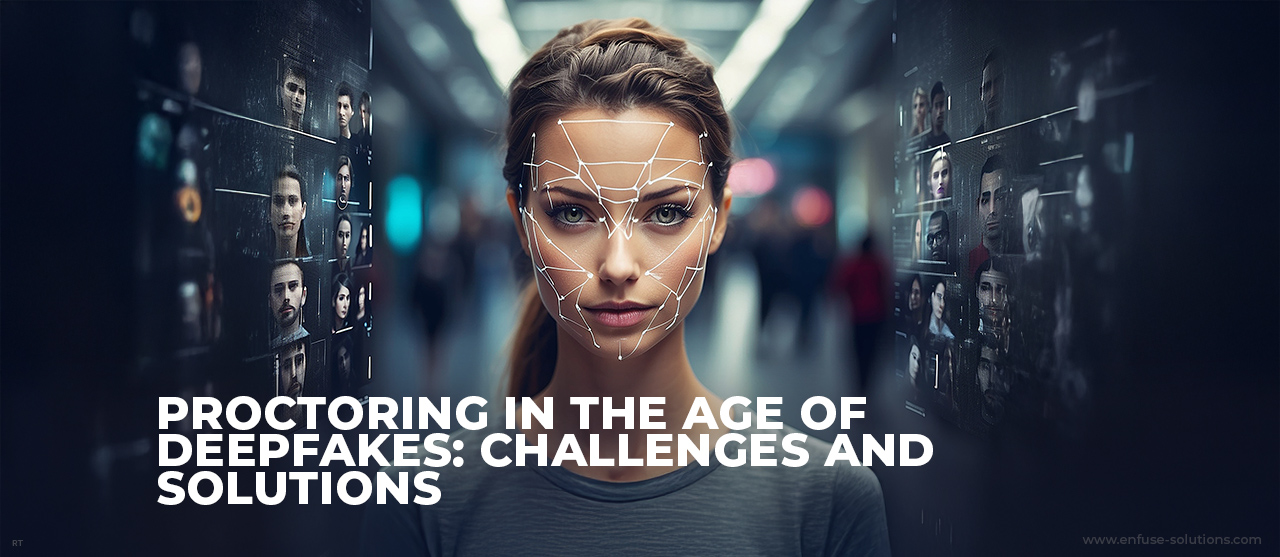
As remote learning and online assessments become the new norm, proctoring technologies have risen to meet the demand for secure, scalable examination systems. However, a new threat is emerging that could undermine the very integrity these systems are designed to protect – deepfakes.
The Deepfake Dilemma
Deepfakes – AI-generated synthetic media that convincingly mimic real human faces, voices, or actions—are no longer confined to social media or entertainment. They’re increasingly being used in malicious ways, including attempts to impersonate test-takers during online proctored exams.
This evolving threat poses a serious question: How can we trust what we see and hear in a virtual environment?
Challenges Deepfakes Pose To Proctoring
- Facial Spoofing: AI-generated faces can trick basic facial recognition systems during identity verification checks.
- Voice Cloning: Audio deepfakes may fool voice authentication systems used to validate the test-taker’s identity.
- Pre-recorded Videos: Test-takers may attempt to loop manipulated videos that simulate live presence and behavior.
- AI-Augmented Cheating: Sophisticated candidates may use deepfake avatars or digital overlays to appear as someone else.
Solutions And Countermeasures
1. Multi-Factor Biometric Authentication
Combining facial recognition with voice biometrics and keystroke dynamics adds layers of verification, making it significantly harder to spoof identity.
2. Liveness Detection Technology
Modern proctoring tools incorporate AI that can detect signs of liveness, such as natural eye movement, lighting inconsistencies, and depth perception, to flag fake visuals.
3. Continuous Monitoring And Behavioral Analytics
Real-time monitoring that tracks suspicious behavior, such as irregular eye movement or unnatural facial expressions, can help identify potential deepfake usage.
4. AI-Trained To Detect AI
Advanced proctoring systems are now being trained on deepfake datasets to recognize subtle signs of synthetic manipulation.
5. Proctor And AI Collaboration
A hybrid model that combines the vigilance of human proctors with AI-based alerts ensures a more robust response to potential cheating attempts.
6. Education And Policy
Informing test-takers about consequences and training institutions on the signs of deepfake misuse creates a more informed ecosystem.
Looking Ahead
The battle between cheating techniques and security technologies is ongoing. As deepfake technology evolves, so must proctoring solutions. For proctoring providers, staying ahead of the curve means continually updating AI models, enhancing authentication methods, and collaborating with academic institutions to ensure a fair and secure testing environment.
Final Thoughts
Deepfakes may challenge the foundation of online exam integrity, but with the right mix of technology, vigilance, and innovation, they don’t have to win. As the line between real and fake becomes increasingly blurred, proctoring systems must rise to the occasion, not just to detect dishonesty, but to preserve trust in digital education itself.
Looking To Safeguard Your Exams Against Deepfake Threats?
At EnFuse Solutions, we specialize in professional proctoring and monitoring services designed to uphold the integrity of your online assessments. Our trained proctors, supported by smart monitoring tools, are equipped to detect suspicious behavior – including deepfake-based impersonation attempts – in real time. Connect with us to ensure secure, credible, and seamless exam experiences – every time.

















Comment